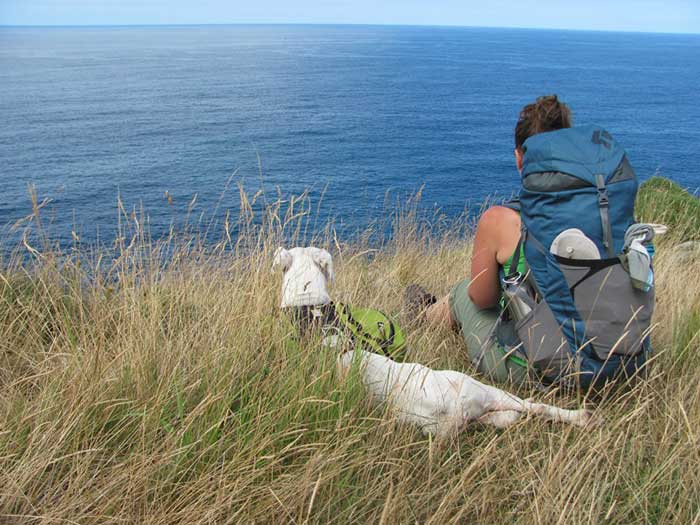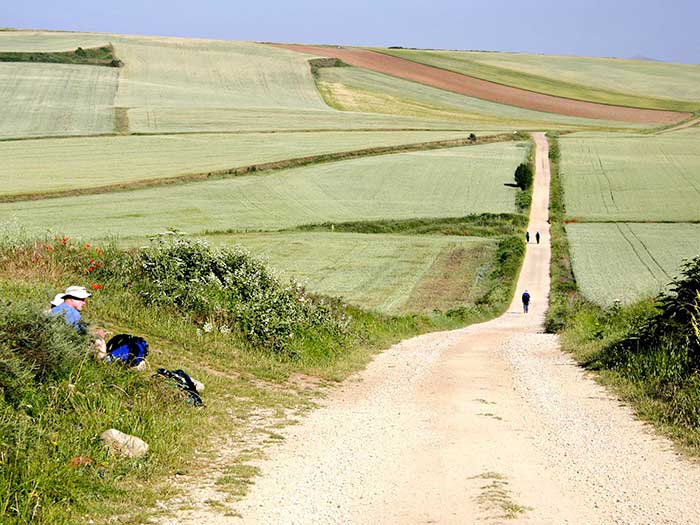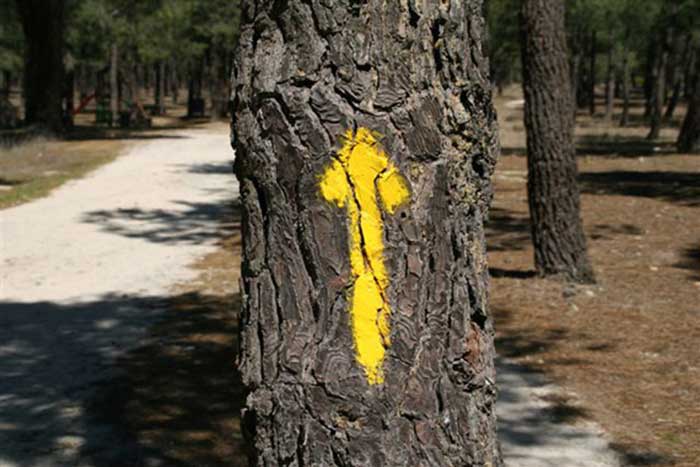Think of the Camino as walking several marathons. So preparation and training is essential. If you are going to undertake any long distance walk you must prepare your body for this arduous task.

You should be correctly equipped according to the time of year you choose to do
the route, your individual characteristics and whether you are walking, cycling etc.
In general you should bear the following points in mind:
Footwear
Use comfortable, good-fitting walking shoes or boots, with good heel support and non-slip soles. If possible, use shoes you have already worn and so know they are comfortable. During your Camino you are most likely to get blisters, but the last thing you want to happen is to get blisters on your first few days because your boots are too tight or too stiff because you haven’t worn them before. When choosing footwear, pay attention to what is on the label as this tells you what each part is made of the instep, the lining, the insole and the sole. The label should be clearly visible and fixed to at least one boot of each pair and should not be confusing.
Don´t forget to take some flip-flops or crocs to use in the shower and to rest at the end of each stage.

Backpack
It should be light and comfortable. Do not fill it with unnecessary objects or things you can acquire along the way. The straps should not rub against your skin. It is a good idea to put things inside your rucksack tidily so you can find them when you need them. If you decide to do the route by bicycle, the weight should be balanced so you can ride as comfortably as possible. Avoid buying an oversized backpack, because you won’t resist packing it full…
Bear it in mind that the ideal weight of your backpack is about 10% of your bodyweight.
Another suggestion is to train wearing your back pack. As with the walking start out with the pack part full, gradually increasing the weight as you get fitter until it is fully loaded. Remember you will be carrying all your belongings with you along the Camino. If you can, do some long walks on two consecutive days, this will give you a feel of what you will expect on the Camino, getting up the next day a little tired and foot sore, but having to do it all again.
Many Albergues do not issue blankets so a sleeping bag is a good thing to take with you, along with a pillow case.

Clothes
Clothes should be suitable for the kind of weather. In summer, light cotton garments and in winter an anorak, gloves and woollen garments, and a hat for the cold in winter and for the sun in summer. Just as with foot wear, the label on clothing should contain, among other details, sufficient information about its nature, composition and use, as well as instructions for use.
First aid kit
There are chemists in the main towns along the route, so your first aid kit should only contain what is essential, e.g. scissors, sticking plaster, cotton and elastic bandages, alcohol, disinfectant, anti-inflammatory cream, aspirins or paracetamol.
Walking stick
This can be very useful for walking on slippery ground.
Pets
If you are travelling with pets it is important to:
- Make sure they are vaccinated and treated for fleas and that this information figures on your pet ’s health card, which you should take with you.
- Plan and adapt your route and stages according to accommodation which accepts pets.

Brief health recommendations
Pilgrims should always travel with their health card.
- If you come from another member state of the European Union, it is a good idea to have a European Health Card.
- If you come from a country which is not par t of the European Union, some countries have agreements with Spain; you should find out before coming if your country has such an agreement and then come with all the correct papers.
- The telephone number for accidents and emergencies in Spain is 112.
There are various health recommendations which you should observe:
Train beforehand and bear in mind that you should plan the stages
of the route according to your physical possibilities. Ration your strength and
take frequent or long rests as you need them. It is not a good idea to reach
the limits of your strength. Start slowly say 5 kilometres in a day, gradually increasing this to 15 to 20 kilometres a day. Start the preparation a few months in advance. Giving yourself plenty of time to get used to the amount of walking you will be doing will reduce the shock when you begin the Camino proper. If you can, train going up and down steep hills/mountains as you will be faced with quite a few of these, particularly in the early and latter stages of the Camino.

Avoid direct sunlight on your head to prevent sunstroke and
dizziness – use a cap or hat. Try to avoid travelling when the sun is strongest
(at midday) so that you don’t get burnt or dehydrated from sweating too much, get used to the sun gradually (especially if you come from a country with a different climate), use sun tan lotion, hydrating creams and sunglasses which protect your eyes from ultraviolet radiation.
If you are travelling by bicycle use a helmet and reflective vest.

Drink bottled water or drinkable water from a public supply; you should not drink water from streams, rivers, springs or fountains if you are not sure it is drinkable. You can also buy isotonic drinks whose sodium and potassium salts can be beneficial for a healthy adult.
Eat fresh food 4 or 5 times a day instead of having one large meal. Fruit and vegetables should be washed with drinking water. If you carry pre-cooked food or food you have prepared previously, make sure it is correctly preserved.
A daily shower or bath and drying off not only ensures correct personal hygiene but is highly recommendable for rest and to avoid maceration of the skin and fungal infections. Do not share personal toiletries such as razors or tweezers.
It is essential to take care of your feet to avoid blisters; use clean dry cotton socks which fit well to avoid rubbing.
Experimented pilgrims will be able to suggest more recommendations. If you have some in mind, tell us!
Buen Camino, amigos!
Anxo Saco



Comments
Consellos para preparar o Camiño de Santiago / Tips for preparing the Way of St James – Mochila viaxeira
[…] http://caminotravelcenter.com/your-first-camino-essential-advise-for-preparing-it/ […]
Judy
I disagree with cotton clothing!!! You will want to wash your clothes often and cotton does not dry quickly!! Take synthetics that will wSh in the shower and dry over night!!!!!!!